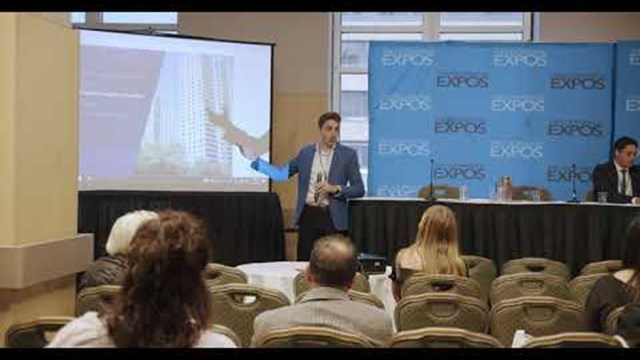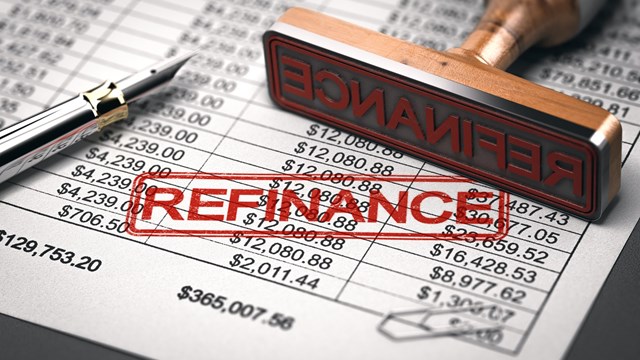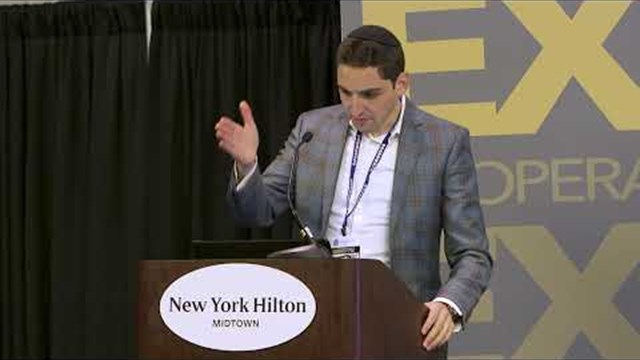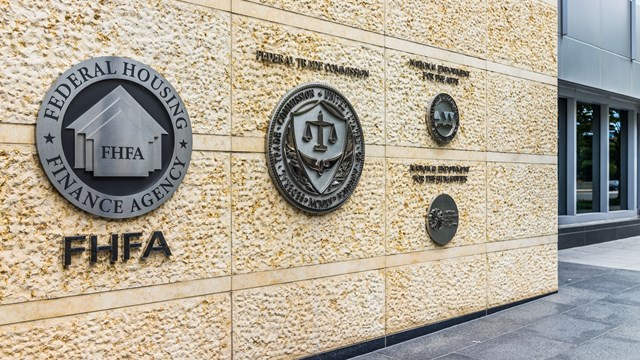For many, the idea of getting a new mortgage on a home or apartment is enough to cause even the heartiest soul to break out in a light sweat. Now imagine refinancing a mortgage for a multimillion-dollar co-op building, and the light sweat may turn cold.
Despite the intimidation factor, with the right mix of expert advice and sensible planning, refinancing an underlying mortgage for even a large co-op community can be undertaken with a minimum of stress and angst.
The Basics
An underlying mortgage is “A commercial loan on a piece of real estate, owned by a corporation,” says Pat Niland, president of First Funding of New York LLC, a commercial mortgage firm. In a co-op building with one hundred units, the underlying mortgage will be the only one on the building itself. “That loan is senior to all other types of liens,” says Gregg Winter, president of the Manhattan-based Winter & Company, specializing in real estate loan financing. And, he adds, “It is a form of debt that is proportionately shared (by residents) according to the number of shares in the whole building.”
This is completely different from what takes place in a condo community, where every unit owner would have their own individual mortgage. In fact, overarching loans for an entire condo association or community are exceptionally rare. While Winter says he has done literally hundreds of underlying mortgages for co-ops over the course of his career, he has helped secure loans for less than five condo associations in that whole span of time.
Why Refi?
Refinancing a mortgage is a serious and time-consuming process, one that for most New York buildings requires making decisions about millions—and sometimes tens of millions—of dollars. Co-op boards and management will undertake securing a new mortgage for any number of reasons. One might be that their previous loan is coming due. “That is one of the top reasons for refinancing,” says Niland.
The most common terms for an underlying mortgage is a 10-year fixed rate loan amortized over 30 years. “There’s a certain resemblance to a car lease,” says Winter. “For cars, three years is a typically efficient time to refinance.” Co-op loans are the same with ten years being the magic number. “Co-ops are essentially leasing money for a certain period of time,” he says.
And for those who want to search out a lengthier loan, even though the payments will be spread out over 20 or 30 years, “When you look for something out of the ordinary, it’s going to be more expensive,” says Winter.
Plus, he continues, “You can’t make a decision in 2011 that will be valid for the building in 20 or 30 years. Some buildings might want to go for longer terms to save in closing costs, but it’s going to end up costing them more.”
Capital needs are perhaps the biggest motivation for securing a new loan, says Niland. And that 10 year plan fits well with the planning schedules of most large buildings. “They’ll need to redo their roofs or lobbies,” Winter says. “Needs will change as will the tastes and attitudes of co-op boards.”
Other reasons for reaching out to lenders is a desire to take advantage of lower rates or a desire to restructure their loans, says Niland. There can be significant downsides, however, to refinancing for those reasons. On a regular home mortgage, if there was a two percent difference between an existing mortgage rate and what was currently being offered, it might make sense for a homeowner to pursue a new loan. That is not necessarily true for the holders of an underlying mortgage. “It might not make sense because virtually every underlying mortgage has a prepayment clause that is calculated according to the yield maintenance,” says Niland. “The penalty is the present value of the interest the lender would have earned” if the loan had gone for the full length of its term. For mortgages valued in the millions, that amount of interest could be enormous, and certainly enough to undo the benefits of a percentage point or two decrease over the length of a new 10-year loan.
Some Things to Consider
Which brings us to a new point—what should boards and managers consider before jumping into a refinance? First and foremost, it is vitally important to determine if the co-op even can go after a new loan. Boards should “call all of their professional advisors—accountant, attorney and managing agent—and get them in a room to discuss if they can refinance,” says Niland. That means ensuring they are in the proper timeframe to refinance and that there are no prepayment fees pending or that those fees have become low enough to handle. (Usually, the amount of the fee lessens over the life of the loan, with the lowest amount due coming toward the end of the loan.) “Look at the prepayment penalty clause,” says Winter. “Right now, it could be two percent but waiting two months might bring it down to one percent.” And that could make a huge difference in the money expended on a new loan.
The second biggest question before refinancing is to determine how much to borrow. That is where the team of experts comes into the equation again. “Most boards wrestle with how much to borrow,” Winter says. “Just enough to pay off the previous mortgage or enough to augment reserves? (By not borrowing enough), people can be a penny wise and pound foolish, finding that they have a big capital need a year later and they have to assess or get a credit line.” That is why it is important to “ask themselves what are their capital needs?”
Niland recommends having an engineer come in. “You should evaluate every major component of the building,” he says. “Roof, windows, structure, pools, retail space. And have an analysis done of capital improvements needed now and in five years.”
The board also should look at the amount of current debt and how big the reserve fund is. Based on future plans and needs, “they may want to bump up the reserves,” Niland says.
“Before a co-op refinances, they should have a plan that will allow them to use the excess proceeds and allocate monies to a reserve, which is usually the appropriate thing to do” says Neil Sonenberg, CPA, partner-in-charge of the real estate services group of Rosen Seymour Shapss Martin & Company LLP. With money from a new loan in hand, “a co-op should not have a knee jerk reaction of lowering their maintenance. They should fulfill their fiduciary responsibility by protecting the plant facility and keeping it in optimum shape and ‘squirreling ‘ any excess funds to a reserve.”
Niland agrees. “Because a refi is so expensive, the board really does have a fiduciary responsibility to do a full analysis and borrow the right amount. It makes no sense not to borrow enough now and have to borrow more in five years.” But at the same time, the analysis must be as exact as possible “because you don’t want to borrow too much either,” Niland adds.
When all the proper analysis has been done, the board then will need to debate and discuss the issue and take a vote on moving forward. The building’s bylaws will determine if the whole building has to vote. Either way, “most boards will inform the building of the evolution of their decision,” Winter says.
Getting the Loan
Contrary to all of the frightening news stories in recent years on the difficulties of getting a mortgage, the market for underlying mortgages has held relatively steady. The larger and more expensive buildings that have healthy finances and a good team of advisors, from mortgage brokers to accountants, will have an easier time than others. “Co-ops with strong balance sheets and buildings that are updated and in good shape obviously have a much easier time obtaining mortgages from such banks as NCB, HSBC and Sovereign,” says Sonenberg. “The stated banks are the banks where I have seen a majority of the business being written.”
“The market is really stratified,” adds Niland. “Larger buildings with bigger balance sheets and loan needs will find more interested lenders than smaller buildings with loans under $1 million. “At the $250,000 range, you can still get a loan, but it will be pretty expensive,” Niland says.
Overall, though, “it’s a very healthy market,” Winter says. “The availability of well-priced money is good.”
Banks also will look at the relationship between the amount of debt a building has versus the value of the building itself. “If that percentage is five to 10, lenders will fall all over themselves to offer that building a loan,” Niland says. It starts getting more difficult as that number rises.
The ratio of units held by residents versus sponsors also will play into the availability of a loan. If 100 units out of 100 are owner occupied, “that’s the Holy Grail for lenders,” says Winter. “If 90 are owner occupied and 10 sublet, that’s still okay. It’s only when there is, say, 40 percent held by sponsor and the sponsor has a negative cash flow and debt on his units, then that’s going to be detrimental.”
For the most part, though, a New York co-op is considered a fairly safe bet for a bank. “From the point of view of the lenders, co-ops tend to be very low leverage deals,” Winter says. If a building is worth $50 million and they want a $5 million loan, the risk is low for the bank. “So co-ops rarely present loan-to-value problems for lenders,” Winter says. “They just want to see that leverage at less than 50 percent and they want to see that there’s no litigation or anything unusual going on.”
With the right mix of planning and know-how, securing a new underlying mortgage need not be a traumatic experience for the board, management or residents. It is simply a matter of knowing your facts and being prepared.
Liz Lent is a freelance writer and a frequent contributor to The Cooperator.










2 Comments
Leave a Comment